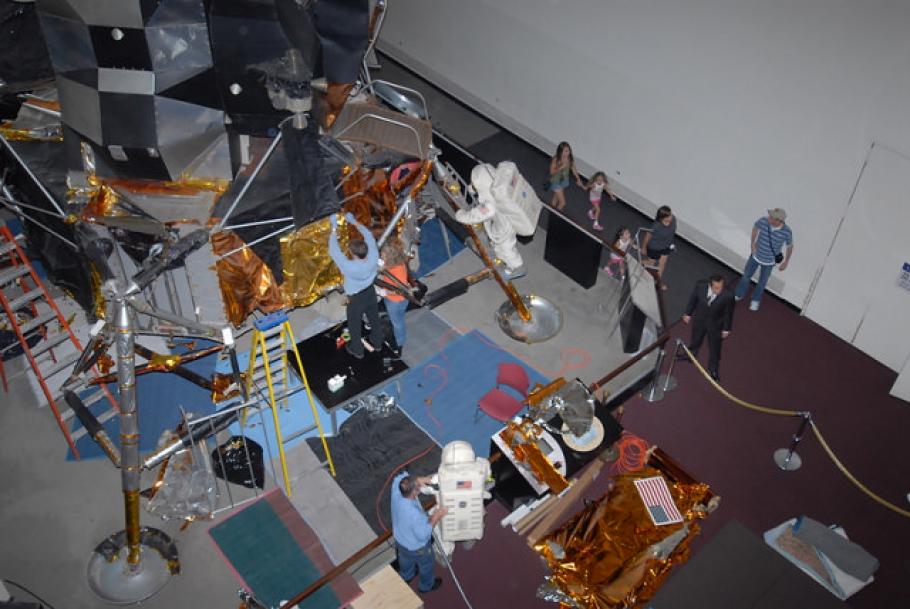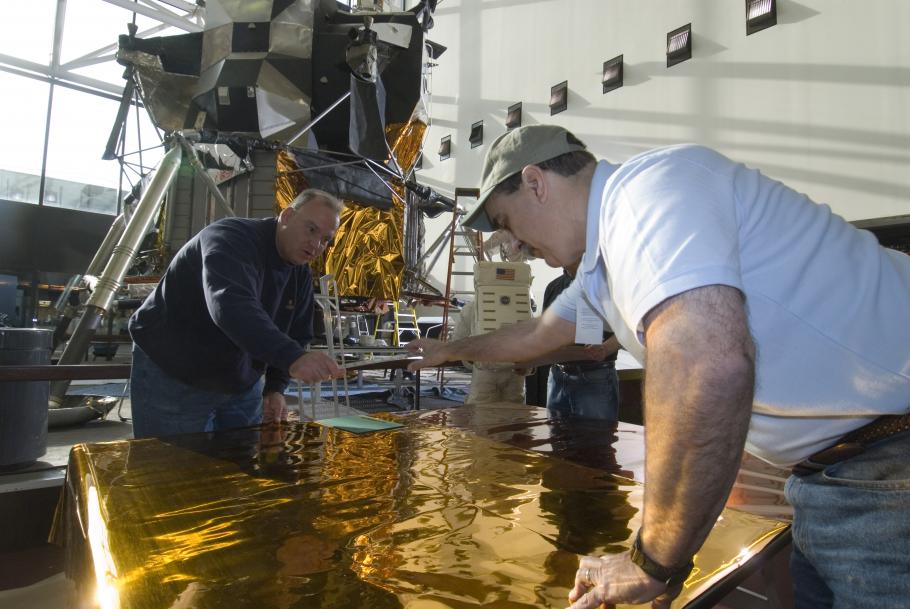Even in their retirement at the National Air and Space Museum, the Apollo-era artifacts lead busy lives and are counted amongst the Museum’s most popular objects, as Gar Schulin can attest to. Throughout his life, Gar has put on many “helmets” at the Museum, having been a docent, researcher, and now, a supporter as he contributes to the restoration of the Lunar Module 2’s descent stage.
Gar Schulin became one of the National Air and Space Museum’s youngest docents at the age of 15. Needless to say, Gar wasn’t your average teenager in the 1970s – he grew up with the Space Age and studied many NASA technical publications; even Apollo Training Manuals received from Engineers who had worked in the program.
“I do not recall anyone else near my age giving tours or being turned loose to meet and greet the general public, ” he recalls, “ but it was a joy for me to share my enthusiasm with citizens from across the world, and turn their casual museum visits into a thrilling learning experience.”
Being a young, enthusiastic docent had its perks - such as stick-and-rudder flight training in an employee’s World War II PT-17 trainer, or befriending the legendary Paul Garber and listening to his firsthand accounts of the Wright brothers. Gar could certainly appreciate the good fortune of knowing men who witnessed flights by Orville Wright and men who flew the first Apollo lunar landing mission.
Gar’s work for the National Air and Space Museum didn’t stop on the museum floor. He later mapped lunar geology as a Research Assistant in the Museum’s Center for Earth and Planetary Studies, assisting Dr. Farouk El-Baz, the distinguished geologist who trained the Apollo astronauts in the art of visual and geologic interpretation from lunar orbit.
Today, Gar continues his involvement with the Museum through his financial support of the Apollo Lunar Module 2’s restoration, adding his story and perspective to its history. The LM-2, a cousin of the Lunar Module 5 “Eagle” that touched down on the Moon during Apollo 11, was built for an unmanned earth-orbit test flight, a flight deemed unnecessary after the great success of Apollo 5.
These days, the descent stage of the LM-2 is dressed to resemble the Eagle during those first historic moments, complete with two astronaut mannequins beginning their lunar walk. And while the aluminized plastic film wrapped around the LM-2’s descent stage may be fit to withstand space exploration, the rigors of museum exhibition over the last 30 years have resulted in its deterioration.
In offering his support, Gar recognizes the LM-2 as “an important icon, not only representing one of America’s greatest engineering and scientific achievements; it remains a tribute to the extraordinary efforts of over 400,000 engineers, technicians and scientists who made the promise of Project Apollo possible.”
Now, on the eve of the 40th Anniversary of the Apollo 11 lunar landing, Gar and his wife Kathryn are proud to help refurbish the LM-2, so that all Museum visitors can experience this “giant leap for mankind” as if it were July 20th, 1969.
Carolyn Stewart is a Development Associate in the Office of Development at the National Air and Space Museum.

